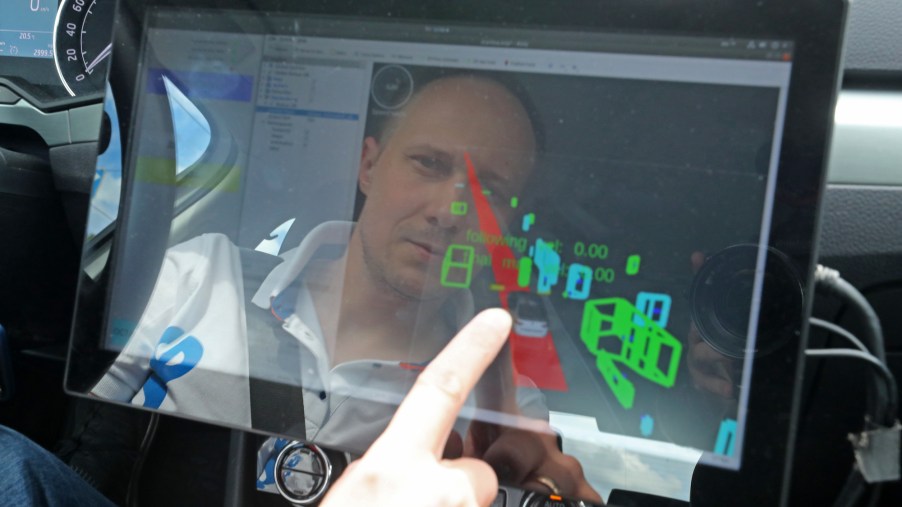
The First Car With a Touchscreen Came Out in the ’80s
In-car technology, displays, and controls have come a long way over the years. And today’s tech-savvy rides sit in stark contrast to yesterday’s vehicles. But when you look at your dashboard touchscreen — brimming with features such as navigation, mobile device pairing, and even climate controls — you’re not experiencing something entirely new.
In fact, touchscreens in cars is a movement that began in the 1980s. Automakers long ago had the idea to transform displays into digital, interactive screens. But they took some time to catch on with the masses.
The in-cabin touchscreen isn’t a new concept
Believe it or not, the concept of touchscreens in cars isn’t novel. Dashboard screens began as cathode-ray-tube technology in the late ’70s and early ’80s. Some automakers even dabbled in LED displays. For example, the 1979 Aston Martin Lagonda, a pricey and advanced car for its time, boasted an elaborate collection of LED screens.
According to Digital Trends, the 1986 Buick Riviera is also considered a touchscreen pioneer. It was likely the first mass-production vehicle to harness the tech. The Riviera featured a green-and-black cathode-ray-tube screen display, The News Wheel says. This model was considered cutting-edge back then. But the car was discontinued in 1990. Not every automaker was ready to embrace the touchscreen just yet.
Touchscreens weren’t always well-received either
Automakers once perceived in-dash technology as an upscale feature. But not everyone was wild about the idea. In the late ’80s and early ’90s, some critics were concerned touchscreens and screen-lit displays distracted drivers. Popular Mechanics even griped that the 1986 Riviera’s touchscreen “violates the First Commandment of ergonomics — you must take your eyes off the road to make any adjustments.”
The evolution of technology and touchscreens
Over the years, this cutting-edge technology only improved, and touchscreens seemed to grow bigger and bigger. What began with digital displays for car-stereo equalizers quickly transitioned to full map-view navigation. Back then, screens were maybe only an inch or two wide, tiny compared with touchscreens and displays of today’s size.
But the idea evolved from the 1987 Toyota Royal Crown’s CD-based navigation to the 1990 Mazda Eunos Cosmo’s GPS-based nav. According to The Globe and Mail, some observers credit the 2001 BMW 7 Series for standardizing the central, dash-mounted touchscreen as the hub for car interactions.
Today’s cars aren’t usually designed without them
Only the high-end models of a half-century ago boasted a digital display or touchscreen. But almost all of today’s new vehicles offer the technology. Cars of every price point and type make smart use of in-dash touchscreens. And the initial pushback and concerns about distraction didn’t prevent it from evolving. Screens are taking up more dashboard real estate and control more vehicle functions.
As an example, Tesla has revolutionized touchscreen capabilities. Given the Model S’s 17-inch screen that controls everything from vehicle speed to the sunroof, it’s clear that touchscreens and other digital controls will continue to evolve. Even the subcompact Mercedes A-Class offers two 10.5-inch screens that stretch across almost half of the dash. And there aren’t any immediate signs of automaker designs going back.
The next time you reach over to engage the navigation on your car’s touchscreen, remember this tech isn’t necessarily new. Automakers began exploring it decades ago. Though those first attempts at interactive screens didn’t catch on right away, the touchscreen takeover is now clearly underway. And as a result, driving might actually be safer and more convenient than ever.


